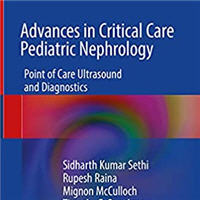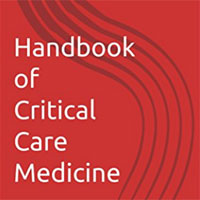Tag: CRRT
Hemolysis in Septic Patients with Acute Respiratory Failure: Prognostic Implications
This study highlights the critical role of hemolysis in sepsis and acute respiratory failure, showing a strong association with organ dysfunction. Hemolysis is notably frequent, especially in patients with septic shock... read more
Hemodynamic Stabilization Using CRRT and cIVNa Combination Therapy
Compared with conventional continuous renal replacement therapy (CRRT), combination therapy of CRRT and continuous intravenous sodium infusion therapy (cIVNa) increased blood pressure, enhanced urinary volume, and reduced... read more
Management of ARDS COVID-19 Patients Using Hemoperfusion and CRRT
Combined hemoperfusion (HP) and continuous renal replacement therapy (CRRT) hold promise as a potential intervention for severe COVID-19 cases with multiple organ dysfunction, leading to improved clinical outcomes. Fifty-six... read more
Fluid Management Impact on Outcomes in Sequential Extracorporeal Support
Sepsis is a life-threatening condition characterized by dysregulated inflammatory responses, often leading to multiple organ dysfunction and high mortality rates. Continuous renal replacement therapy (CRRT) and extracorporeal... read more
TyG Index And Short-term Mortality in Patients with Cardiogenic Shock
The triglyceride-glucose (TyG) index is significantly associated with short-term mortality in patients with cardiogenic shock (CS) and may serve as a useful biomarker for risk stratification. This retrospective cohort... read more
Clinical Efficacy of Nafamostat Mesylate-assisted CRRT Therapy in SA-AKI Patients
Nafamostat Mesylate (NM)-assisted continuous renal replacement therapy (CRRT) therapy significantly improves the therapeutic efficacy of patients with sepsis-associated acute kidney injury (SA-AKI). This combined approach... read more
Cumulative Fluid Balance During the First Three ICU Days in Septic Patients with Heart Failure
In septic patients with HFpEF, positive fluid balance of CFB-day1 might improve the prognosis of patients. However, from the second day, fluid overload was associated with poor prognosis. Therefore, we propose that on... read more
Favorable Outcomes When Using Prolonged CPR Combined with ECPR
Extracorporeal CPR (ECPR) combined with continuous renal replacement therapy (CRRT) successfully rescues a patient who experienced sudden cardiac arrest for 152 minutes. ECPR is an effective and advanced form of extracorporeal... read more
Managing Recurrent Septic Shock – Dual Blood Purification with CytoSorb and oXiris
This case report presents a patient with recurrent septic shock who experienced significant clinical improvement after receiving adjunctive treatment with a combination of continuous renal replacement therapy (CRRT) using... read more
Developing a Rapid Screening Tool for High-risk ICU Sepsis Patients
This study demonstrates that machine learning-based prediction models for sepsis can enhance clinical outcomes through accurate risk assessment during the critical first 24h of ICU admission. Despite healthcare system... read more
New Insights on CRRT for ARDS
In recent times, the applications of continuous renal replacement therapy (CRRT) beyond kidney‐related conditions have been progressively increasing, and its implementation in randomized controlled trials (RCTs) specifically... read more
Protocolized Fluid Balance Neutralization During CRRT
Bitker et al. report the GO NEUTRAL randomized clinical trial results, which investigated fluid balance neutralization guided by functional hemodynamic monitoring (FHM) protocol versus a standard of care in critically ill... read more
UFNET Fluid Removal Strategy Secured by Hemodynamic Monitoring vs. Standard of Care in patients with CRRT
An early and active UFNET strategy secured by an advanced hemodynamic protocol using dynamic indices of preload dependence had the capacity to control H72 FB in an ICU population of patients with acute circulatory failure,... read more
Advances in Critical Care Pediatric Nephrology: Point of Care Ultrasound and Diagnostics
The book covers advances in critical care pediatric nephrology, including care of sick children with acute kidney injury. The book contains detailed guidance on point of care ultrasound in children with acute kidney injury... read more

Endothelial Activation and Microcirculatory Disorders in Sepsis and Critical Illness
The endothelium is one of the largest organs in the human body and lines the blood vessels and microcirculation of all the vital organs. As such, it functions as a massive and critical surveillance system to orchestrate recognition... read more
Citrate Anticoagulation for CRRT
Regional citrate anticoagulation (RCA) is a viable option for liver failure patients. The pro-posed inducible metabolic pathway hypothesis challenges the belief in hepatic dominance over citrate metabolism during RCA-CRRT.... read more
A nomogram predicting pneumonia after cardiac surgery
Three preoperative indicators (age, preoperative malnutrition, diabetes mellitus), one intraoperative indicator (CPB > 135 min) and three postoperative indicators (moderate to severe ARDS, use of ECMO or IABP or CRRT, MV>... read more
Initiation of CRRT vs. Intermittent Hemodialysis in Critically Ill Patients with Severe AKI
In critically ill patients with severe acute kidney injury (AKI), initiation of continuous renal replacement therapy (CRRT), as compared to intermittent hemodialysis (IHD), was associated with a significant reduction in the... read more
Optimal RRT for Critically Ill Patients with Severe AKI
In critically ill patients with severe acute kidney injury (AKI), initiation of continuous renal replacement therapy (CRRT), as compared to intermittent hemodialysis (IHD), was associated with a significant reduction in the... read more
Continuous RRT in Critically Ill Children
The survival rate of patients received continuous renal-replacement therapy (RRT) treatment in our center has improved over past 10 years, and some changes have taken place during these periods. Among them, early initiation... read more
The Association of Platelet Decrease Following CRRT Initiation and Increased Rates of Secondary Infections
Platelet count drop by greater than 40% following continuous renal replacement therapy (CRRT) initiation is associated with an increased risk of secondary infection, particularly in patients with thrombocytopenia at the time... read more
How I Prescribe CRRT
Continuous renal replacement therapy (CRRT) delivers gradual clearance of solutes, fluid balance control, and haemodynamic stability. CRRT does not appear to increase survival compared to intermittent renal replacement therapy... read more









